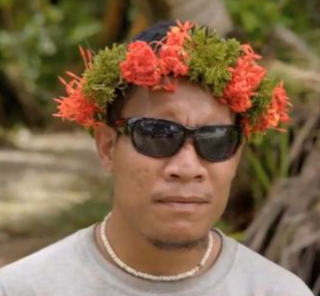色盲之岛

We talk about people being “colour-blind”, but very few of us are. Even those who describe themselves as colour-blind are normally just colour lack. A strongly colour-blind person will still be able to tell 20 different hues, compared to the 100 or so that normal-sighted people see.
Pingelap, a tiny island in the Pacific, is a beautiful spot but one that has a genetic trouble. It is known as Colour Blind Island because so many people who live on this remote island can only see in black and white.
Not being able to see in color is bad enough. But one islander, Herrol, who’s a fisherman, also struggles in full sunlight because all he sees is a painful burnt-out image. “I find it difficult to go outside in the sun,” he says, “because when it’s sunny I cannot see to do my work.”
But if being truly colour-blind is rare, why is it that around 10% of the population of Pingelap are condemned to live in a totally black and white world?
Well, we know that in 1780 the population of Pingelap was all but wiped out by a tsunami(海啸). As few as 20 people survived, one of whom was the king. It’s believed that he had a genetic fault that causes colour-blindness and he passed this fault on to his many descendants.
There is one advantage. When the sun goes in, Herrol can see well, really well, in the dark. So when it gets dark, Herrol and his friends get in their boats and hunt flying fish. They hang up flaming torches and the fish are attracted to the flames like moths(飞蛾) to moonlight. It’s in circumstances like these that Herrol can put his disadvantage to good use. “This type of fishing is fun,” Herrol says, “especially if we catch plenty. So even though it’s hard work, we enjoy it.”
1. The underlined word “hues” in Paragraph 1 probably means ______.(词义猜测)
A persons
B colors
C stars
D blinders

